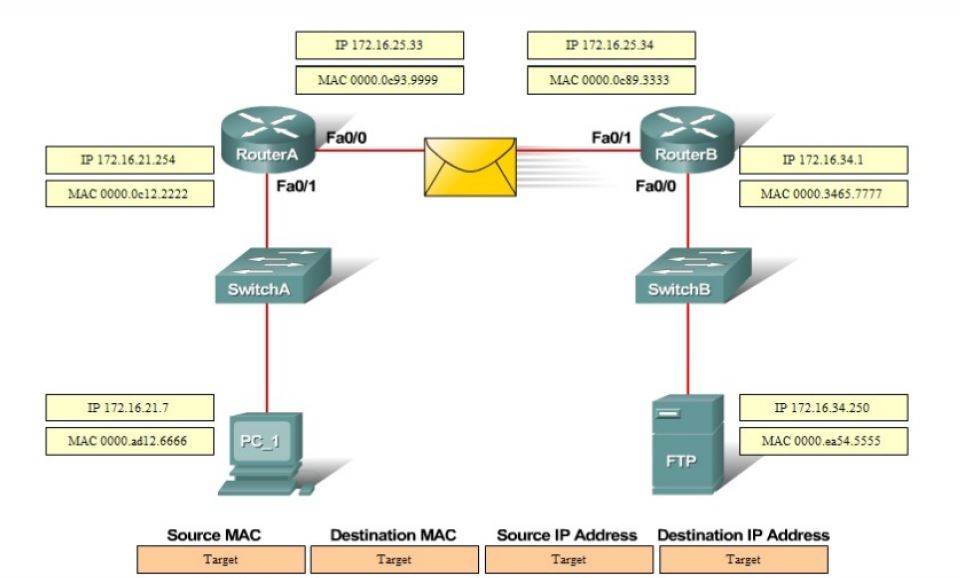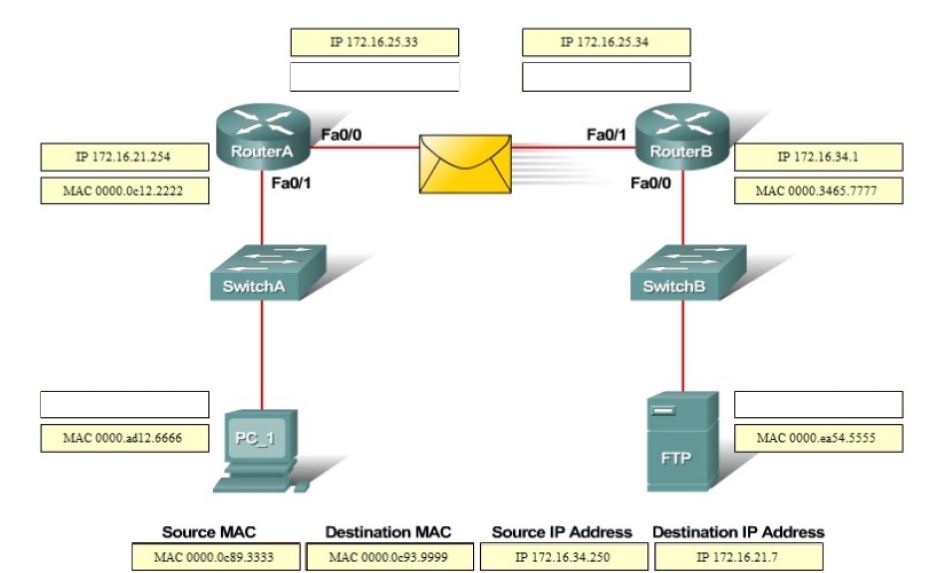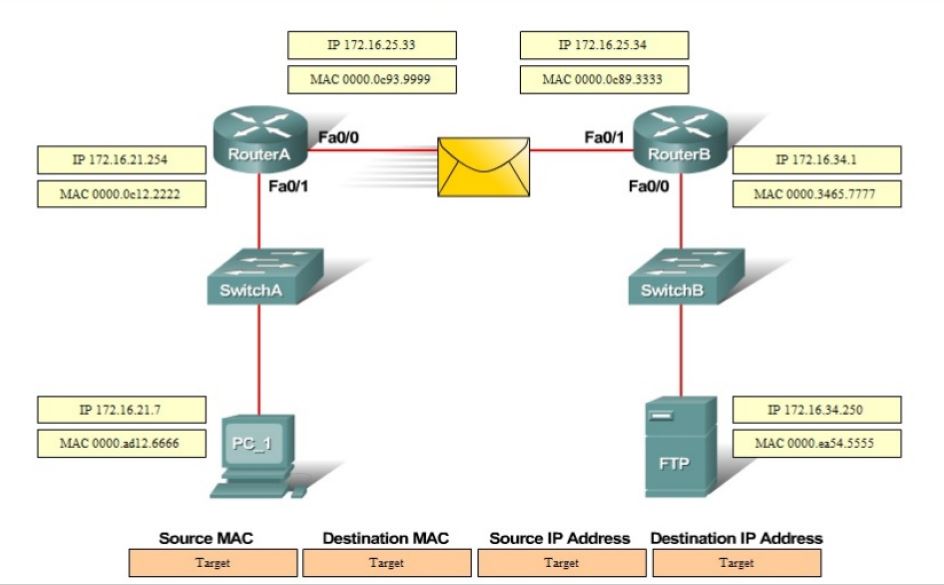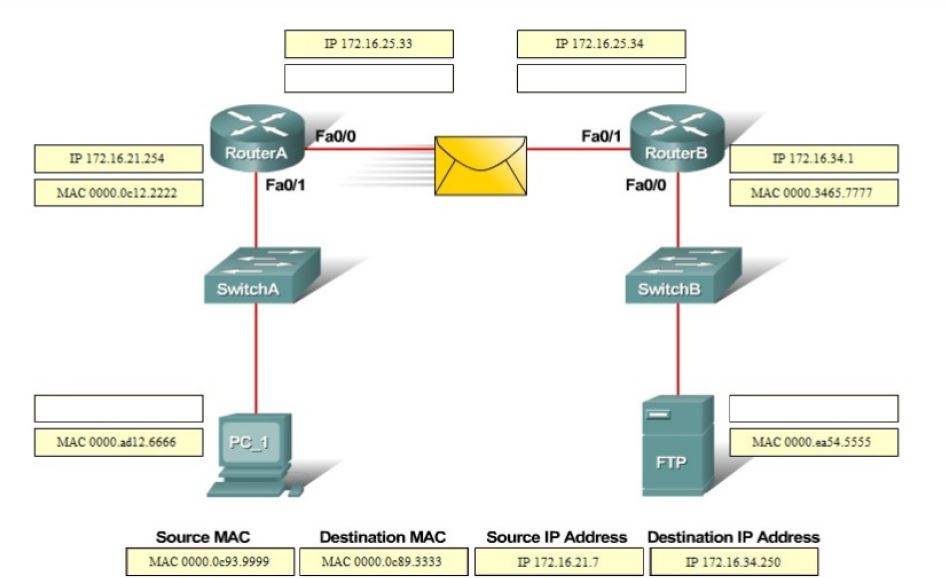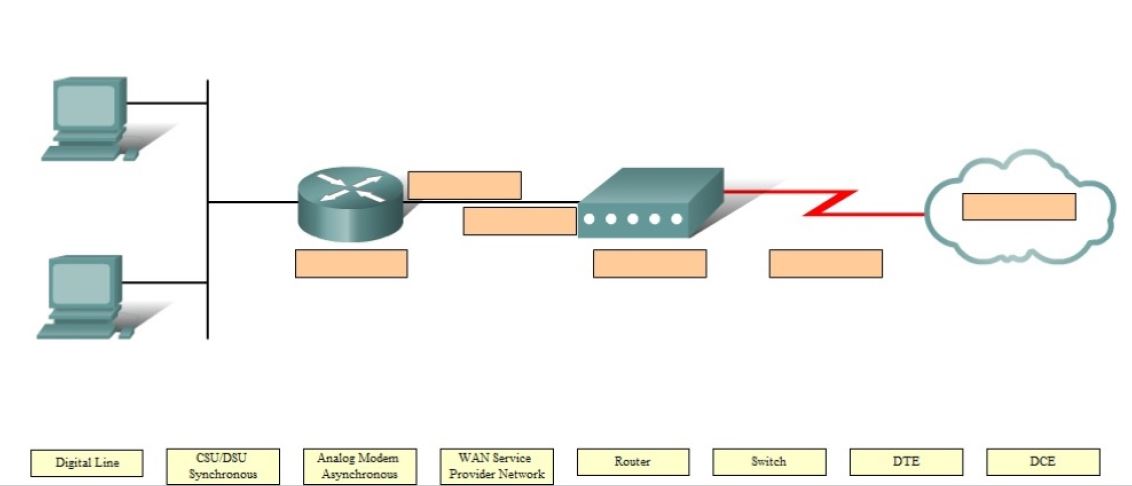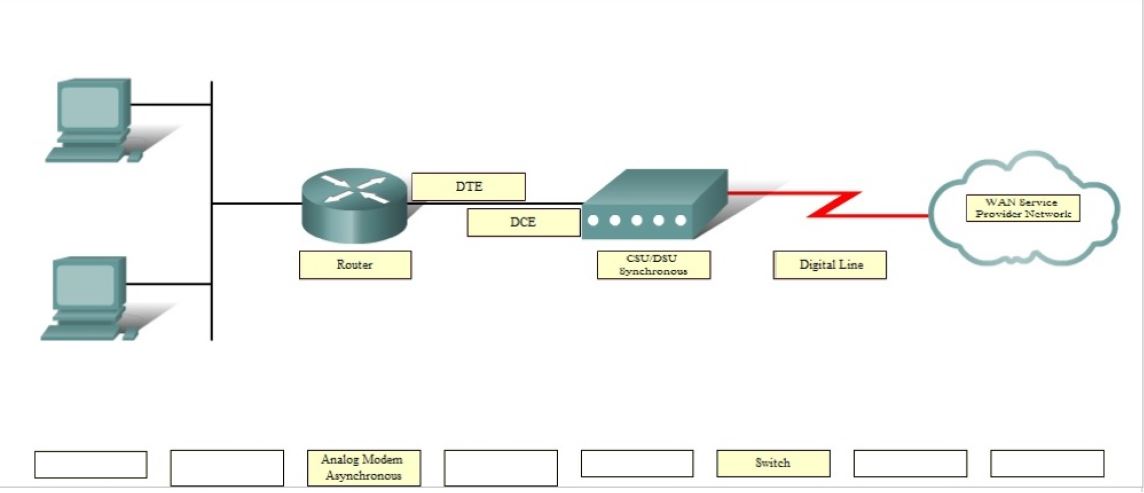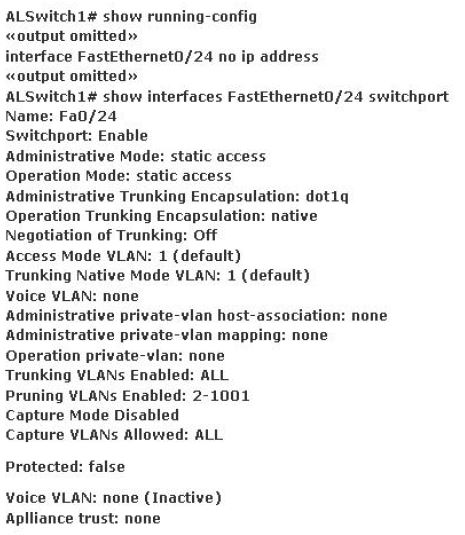Refer to the exhibit. PC_1 is exchanging packets with the FTP server. Consider the packets as they leave RouterB interface Fa0/1 towards RouterA. Drag the correct frame and packet addresses to their place in the table.
Select and Place:
CISCO CCNA Exam – Q72
CISCO CCNA Exam – Q71
CISCO CCNA Exam – Q70
Switch port FastEthernet 0/24 on ALSwitch1 will be used to create an IEEE 802.1Q-compliant trunk to another switch. Based on the output shown, what is the reason the trunk does not form, even though the proper cabling has been attached?
A. VLANs have not been created yet.
B. An IP address must be configured for the port.
C. The port is currently configured for access mode.
D. The correct encapsulation type has not been configured.
E. The “no shutdown” command has not been entered for the port.
CISCO CCNA Exam – Q69
Which port state is introduced by Rapid-PVST?
A. learning
B. listening
C. discarding
D. forwarding
CISCO CCNA Exam – Q68
VLAN 3 is not yet configured on your switch. What happens if you set the switchport access vlan 3 command in interface configuration mode?
A. The command is rejected.
B. The port turns amber.
C. The command is accepted and the respective VLAN is added to vlan.dat.
D. The command is accepted and you must configure the VLAN manually.
CISCO CCNA Exam – Q67
What value is primarily used to determine which port becomes the root port on each non-root switch in a spanning-tree topology?
A. path cost
B. lowest port MAC address
C. VTP revision number
D. highest port priority number
E. port priority number and MAC address
CISCO CCNA Exam – Q66
In a switched environment, what does the IEEE 802.1Q standard describe?
A. the operation of VTP
B. a method of VLAN trunking
C. an approach to wireless LAN communication
D. the process for root bridge selection
E. VLAN pruning
CISCO CCNA Exam – Q65
Switch-1 needs to send data to a host with a MAC address of 00b0.d056.efa4. What will Switch-1 do with this data?
A. Switch-1 will drop the data because it does not have an entry for that MAC address.
B. Switch-1 will flood the data out all of its ports except the port from which the data originated.
C. Switch-1 will send an ARP request out all its ports except the port from which the data originated.
D. Switch-1 will forward the data to its default gateway.
CISCO CCNA Exam – Q64
What is the function of the command switchport trunk native vlan 999 on a Cisco Catalyst switch?
A. It creates a VLAN 999 interface.
B. It designates VLAN 999 for untagged traffic.
C. It blocks VLAN 999 traffic from passing on the trunk.
D. It designates VLAN 999 as the default for all unknown tagged traffic.
